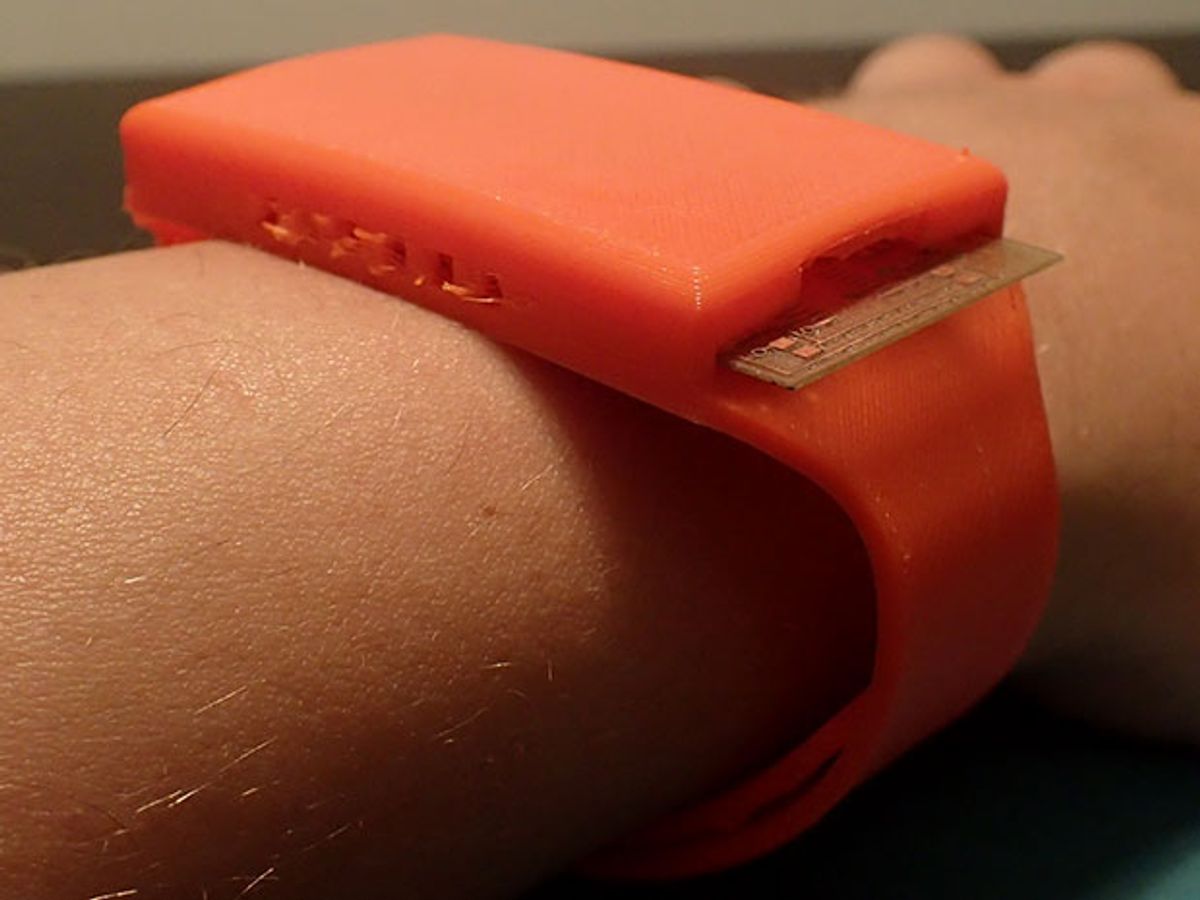A “paper watch” has shown that it can mimic the health-monitoring capabilities of smart watches such as the Apple Watch or Samsung Gear at a fraction of the price. The cheap, wearable device combines flexible sensors made from common household items such as aluminum foil and sponges with hard, silicon-based chip components. Such a hybrid approach could eventually help make cheap, semi-recyclable fitness trackers affordable for practically anyone, its inventors say.
The paper watch really resembles more of a paper wristband, because its current capabilities don’t include telling time. But its inventors at the King Abdullah University of Science and Technology (KAUST) in Saudi Arabia have packed an impressive array of capabilities into their fitness tracker: Early testing has shown it can measure body temperature, sweat levels, heart rate, and blood pressure. The soft sensor components of the device could eventually be replaced whenever they wear out, even as customers keep the rigid chip and battery parts of their wearable device, they say.
“I [have a] vision about an interface which will enable anyone to go to a pharmacy and buy a disposable sensor and insert it easily,” says Muhammad Mustafa Hussain, an electrical engineer at KAUST. “This will give flexibility to innovators and consumers.”

An inexpensive wearable device that can constantly monitor a person’s fitness signs to detect possible patterns indicating health or illness could go a long way toward transforming modern medicine. But most cheap fitness trackers primarily count steps and maybe track sleep patterns. Only higher-end wearable devices with price tags ranging between $50 and hundreds of dollars can measure many more health indicators such as body temperature, sweat, or heart rate.
By comparison, the prototype of the paper watch currently costs US $25. The KAUST researchers aim to reduce that price substantially within the next several years. Their work is detailed in a paper scheduled for publication in a January issue of the journal Advanced Materials Technologies.
“I really would like to disrupt the technology world by making technologies available to everyone specially those who cannot afford them,” Hussain explains. “Therefore, my objective is to reduce the price [by] $5 per year in the next five years until it reaches to a point where literally everyone has one.”
The paper watch builds upon the previous “paper skin” work of Hussain and his colleagues such as Joanna Nassar, an electrical engineer at KAUST and lead author on the upcoming study. That paper skin research created a 3D stacked structure of environmental sensors based on simple household materials.
In their more recent work, the KAUST engineers arranged all the sensors in a single layer instead of within a 3D stack of layers. They created temperature and humidity sensors by drawing with a silver ink pen on Post-It Notes. Pressure sensors were created with aluminum foil, double-sided tape, and polypropylene microfiber cleanroom wipes.
That layer of cheap, recyclable sensors sat at the bottom beneath another layer consisting of readout circuitry for the sensors. A third layer sitting in the middle contained a thinned silicon-based microprocessor chip. A fourth layer included circuitry for the battery and power management circuitry. Finally, the fifth and top layer included an RFID tag—made by drawing on a Post-It Note with the silver ink pen and attaching a flexible radio chip. All the layers are housed within a 3D-printed watch casing.
The paper watch sensors survived preliminary stress testing that involved bending and unbending for 300 cycles. Early lab testing with a single volunteer also showed that the paper watch prototype achieved measurement accuracy roughly comparable to that of smart watches such as the Apple Watch or Samsung Gear.
But the researchers say it’s important for them to continue improving the paper watch’s accuracy beyond its current benchmark of plus or minus five percent of the accuracy of those more expensive smart watches. After all, a blood pressure reading that is off by five percent could be truly “scary” for a wearer, Hussain says.
The current paper watch prototype is being tested with software developed by the Chinese Academy of Sciences and would be able to pair with the smartphones of future customers. Hussain and his colleagues hope to eventually spin off a company focused on providing health monitors for the elderly population starting sometime in 2017. In the process, they may even add timekeeping capability to make their device a true “paper watch.”
“Of course, ‘paper watch’ is a catch phrase, but adding clock capability is easy and we are on that,” Hussain says.
Jeremy Hsu has been working as a science and technology journalist in New York City since 2008. He has written on subjects as diverse as supercomputing and wearable electronics for IEEE Spectrum. When he’s not trying to wrap his head around the latest quantum computing news for Spectrum, he also contributes to a variety of publications such as Scientific American, Discover, Popular Science, and others. He is a graduate of New York University’s Science, Health & Environmental Reporting Program.



